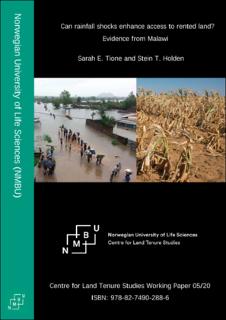Resource information
This study investigates whether and to what extent rainfall shocks recurring in Sub-Saharan Africa, that have been associated with distress land rentals, enhance short-term and medium-term access to rented land by tenant households. Tenant households’ rental decisions are modeled in the state-contingent framework with renting-in of land as a risky input choice. Our data is from three rounds of LSMS data from Malawi used to construct a balanced household panel, combined with corresponding district rainfall data that are used to generate seasonal district-wise rainfall shock variables. Panel probit and Tobit models controlling for unobserved heterogeneity were used. Regional heterogeneities were revealed. The results from the Central Region of Malawi, where land rental markets are most active, indicates that the one-year and two-year lagged downside rainfall shocks help tenant households accessing land not only the first year after a rainfall shock but also in the following years. For the more land constrained Southern Region of Malawi, with less prevalence of land rental markets, we observed that the two-year lagged downside rainfall shock is associated with less access to rented land. These results reveal surprising intertemporal and regional variations that are important for policy discussions and lessons on land rental markets amidst recurring rainfall shocks in SSA.


